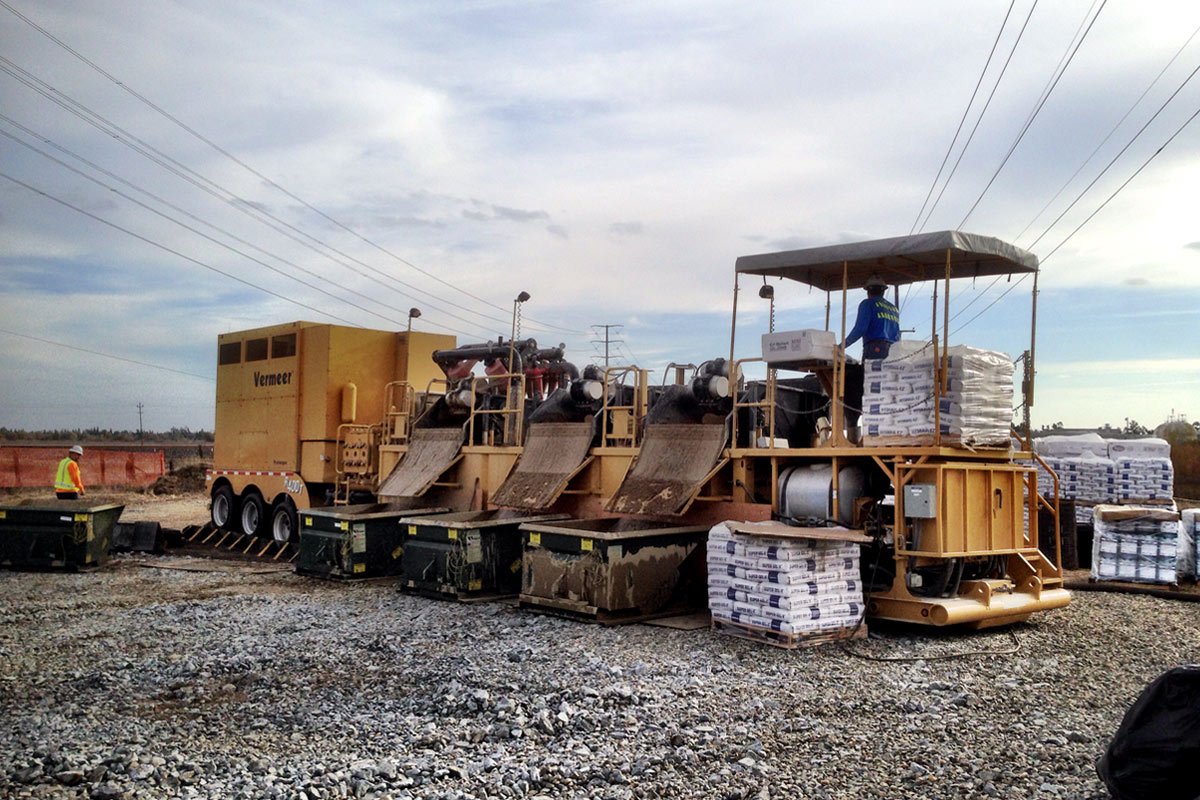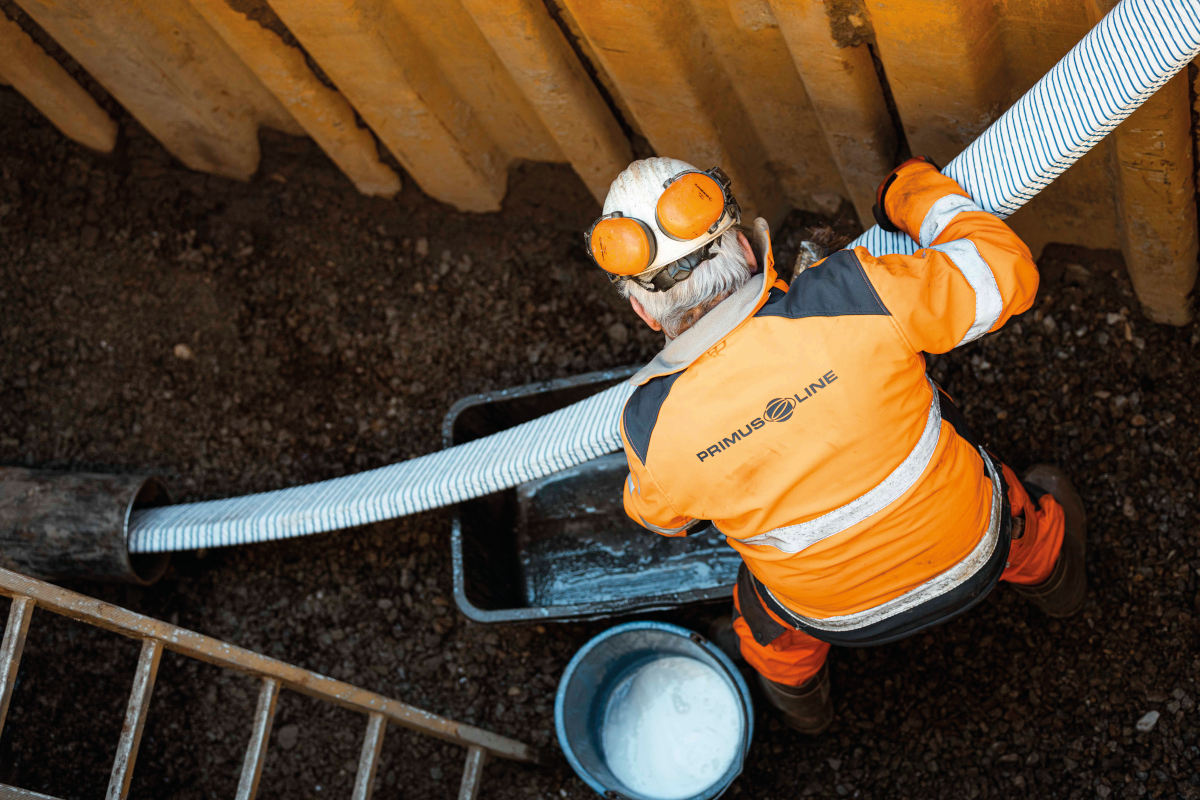
How LED CIPP Kept ZO&O Railroad on Track
A 75-ft run of 4-in. diameter cast iron sewer pipe at the Children’s Zoo in Lincoln, Nebraska, needed replacement due to active infiltration and intrusion (I&I). Tree roots caused such frequent clogging that a hole cut in the sheetrock of a hallway wall was left open to give plumbers unobstructed access to it.
Open-cut extraction and replacement of the pipe was not feasible. The pipe ran beneath a section of the zoo’s ZO&O Railroad. The railway complete with depot and covered tunnel is a popular feature, serving hundreds of adults and children every day and providing additional revenue for the zoo. A construction project involving the railway’s tracks and substructure would shut down rail service for several weeks or longer. Service could not be resumed after disruption to the railbed until the Nebraska Department of Transportation could inspect and recertify the system.
Point Repair of Lincoln owner Jim Spickelmier videoed the run of pipe, confirming it to be a suitable candidate for the cured-in-place pipe (CIPP) lining method. A trenchless pipe renovation and rehab specialist, Point Repair of Lincoln has been providing CIPP renovation in Lincoln and the surrounding area for five years. For the past two years the company has exclusively used an LED light-cured resin system instead of its hot-water cured system.
While CIPP is a well proven, time-tested method of pipe repair, it is relatively new technology compared to other forms of pipe replacement. One objection that can arise, Spickelmier explained, is when the nominal diameter of a pipe to be lined is stipulated by code.
“Adding a liner to the inside of the pipe does reduce its diameter a few millimeters,” he said. “It might be interpreted by some to be a violation of the code.”
Yet in many cases CIPP renovations increase the coefficient of flow over that of the original pipe material. Manufacturers and application experts within the trenchless industry are currently providing municipalities across the country with the technical data they need to accommodate the benefits of CIPP.
Operational staff at the Lincoln Children’s Zoo, in partnership with Point Repair of Lincoln, successfully appealed to their local administrators to allow CIPP rehabilitation of the deteriorated sewer pipe. Point Repair scheduled the repair the morning of June 7, 2024. The project was completed in half a day.

Automated drawback of the LED curing head activates the resin at the appropriate, controlled pace.
Access to the pipe was through the same narrow opening in the wall of a 5-ft-wide hallway used previously during frequent pipe cleanouts. Due to the confined space, the inversion drum was set up in a small office across from the point of access. Point Repair of Lincoln used a HammerHead Trenchless Bluelight LED system.
Wet out liner was inverted through a wye inside the wall down to a 90- degree bend leading to the 75-ft run needing repair. Although the bends created multiple locations that could snag the liner before it reached it, the inversion was successful. Automated drawback of the LED light head ensured optimal exposure of the resin to the blue light for proper curing. The head’s integrated camera allowed the crew to document a sound installation while it was taking place. Less than a half hour after it started, the liner was cured in place and ready for reinstatement. The crew reinstated the line, loaded their equipment, cleaned the work area and were done in time for an early afternoon lunch.
Spickelmier said the hot-water cured CIPP system he had been using prior to the LED system would only have taken about two hours longer, the time required for thermally activated resin to cure.

Wet out calibration tube is loaded into the inversion
Since this light-curing resin does not activate until exposed to a precise wavelength of light in the blue spectrum, the LED system Spickelmier uses also eliminates any anxiety to rush a job installation posed by resins that begin curing as soon as their components are mixed.
Those systems leave contractors only a few minutes to adjust liner, correct wrinkles or address hangups before the resin becomes unworkable. Liners in the LED light-cured system, however, can be wet out ahead of time, offsite, even days before needed on the job. They remain workable until exposed to the LED head’s blue light during pullback. The LED system offers all the benefits of CIPP without the wait time and with a more compact footprint on the jobsite than other systems.
Not only did the LED-cured CIPP method prevent loss of income from any downtime of the zoo’s railway, all labor and materials for this project were donated by Point Repair of Lincoln and its partnering vendors. Spickelmier said projects like this occasionally come up in which the Point Repair of Lincoln team “gets to give something back” to the community. “We don’t just work in Lincoln,” he said. “We’re residents. This is our hometown.”

Wet out liner is loaded into the drum.
Spickelmier credits the Point Repair of Lincoln team for how smoothly the installation went using the LED CIPP system. The six crew members, who have up to 15 years of service with Point Repair of Lincoln, embrace the technology and take great pride in what they accomplish for their clients with it.
“I have great employees,” he said, emphasizing how grateful he was to them, and for Point Repair of Lincoln’s close relationship with the staff of HammerHead Trenchless. “We’ve always been an underground utility company. About 10 years ago we expanded into doing point repairs, which then led to lining. Their staff provided us with training and always stand by us to ensure our success with their equipment.”
Mark Petracek, director of operations for Lincoln Children’s Zoo, said: “We’re thrilled to be able to restore the sewer pipe using a trenchless method. The approach provides a savings of both time and labor, which adds up to a financial advantage and, most importantly, this additional source of revenue – and source of fun – is continuously up and running even during the repair.”

Train service continued uninterrupted throughout the project.
To further underscore the train’s importance, note that the train preceded the zoo itself. Founder Arnott Folsom sold tickets to ride the train in the early 1960s that he then used to create the zoo itself.
The zoo is an important part of Lincoln’s identity. With over 400 animals within its 10-acre property, the Lincoln Children’s Zoo is one of the region’s most popular attractions, hosting more than 380,000 visitors per year. With support from its generous benefactors, the zoo has continued to expand its offerings while remaining a privately funded enterprise since founder Arnott Folsom opened it in 1965.
Joe Bradfield is a contributing writer for HammerHead Trenchless.




